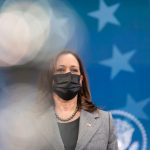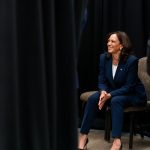Pollsters have a reputation for being about as reliable as a raincoat in a monsoon, and as the 2024 elections loom, many are already hedging their bets. Despite the monumental flops of 2016 and 2020, there seems to be a glimmer of optimism—because if there’s one thing pollsters love more than their high-tech gadgets, it’s making excuses for their spectacularly incorrect predictions. The Daily Caller News Foundation highlights the dilemma pollsters face: how on Earth can they accurately measure the volatile voting patterns of non-college-educated white voters, who are crucial to Donald Trump’s political foundation? Spoiler alert: this is uncharted territory.
As it stands, pollsters are doing their utmost to reach those elusive Trump supporters, but capturing the true essence of those voters is akin to herding caffeinated cats. After all, they learned the hard way that their previous methodologies were about as effective as trying to nail Jell-O to a wall. The very group that columnist Jon McHenry emphasizes is now at the forefront of pollsters’ minds after their past oversights. Previously, they missed the mark by focusing too heavily on college-educated voters—now they’re frantically trying to tweak their data-crunching skills to include more “down-to-earth” demographics.
Polling firms are trying to learn from their mistakes after the biggest polling error in 40 years. By @aaronzitner https://t.co/hw9Wuok7b6
— Anthony DeBarros (@anthonydb) October 22, 2024
Amidst the backdrop of these baffling polling strategies, there’s the growing anxiety about Trump’s “hidden vote,” a phenomenon that continues to leave pollsters scratching their heads. According to Robert Cahaly from the Trafalgar Group, there’s a feeling of déjà vu for those keeping tabs on the upcoming election. It seems that many voters are still opting for the politically-correct route and choosing to stay quiet about their support for Trump, which brings the whole polling game back into the realm of guesswork.
Despite the complexities, the polling world is enjoying an undercurrent of tension as Democrats continue to pedal their ambitious voter mobilization plans in key battleground states. This duality highlights a growing consensus among conservative voters that the hidden trump cards may be in play. Pollsters’ bandwidth is stretched thin as they try to decipher how undecided voters may break in a contest that’s shaping up to resemble the chaos of a circus, complete with a lion tamer and flying trapeze artists.
The ongoing debacle surrounding polling techniques confirms what many already suspect: general public polls often don’t have the quality control that comes with internal polling conducted by political campaigns. As companies scramble for cheap methods—robo-calls and online surveys have become the order of the day—insight gleaned from these approaches is often riddled with biases and potential inaccuracies. With each passing election cycle, it’s increasingly clear that the quest for the “perfect” poll continues to morph into an Olympic event of sorts, where the athletes stumble toward the finish line with their eyes closed.
In a world where voting behavior and participant turnout can shift on a dime, the question remains whether these pollsters will have learned their lessons by 2024. With Trump supporters ready to emerge from the shadows, particularly those who skipped voting in recent years, the electoral map may be far less predictable than the experts want to believe. An impending Trump enthusiasm could very well overshadow optimistic polling projections for Democrats, sending liberal strategists into a frenzy as election day draws near.




